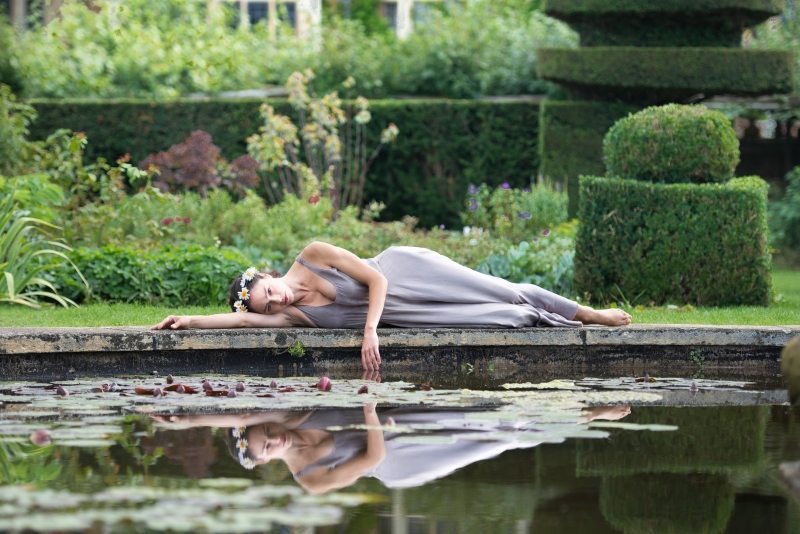Review: SEA OF TROUBLES, Screening, Royal Opera House
A work of integrity and taste

![]()
Kenneth MacMillan was renowned for being a major film buff, so we can assume he’d revel in his 1988 work Sea of Troubles being transferred to the big screen.
The Yorke Dance Project revived the work in 2016-17 for the 25 year anniversary of MacMillan's death, and they’re also leading on this latest reincarnation in collaboration with the Royal Opera House and the Emmy-nominated documentary features director, David Stewart.
But first things first, an important disclaimer: I'm not a Shakespeare scholar, and I don't have an extended history with this specific MacMillan work, so what follows is a novel, honest perspective of the experience. The piece looks at Hamlet, though not literally, and features some of the play's characters whilst primarily focusing on Hamlet’s troubled existence.
Overall it's a work of integrity and taste, and there are many facets that support this statement. MacMillan’s choreography reads fresh and original, and is bursting with actual dance which often feels like a revelation nowadays. His omnipresent skill of communicating dramatic and expansive movement is evident, as is an ingenious way of creating tension between individuals, and an idiosyncratic approach to shaping a group of dancers - think asymmetric tableaus and interlocked, chain mail-esque formations.

Speaking of dancers, Yolande Yorke-Edgell, Artistic Director of The Yorke Dance Project has impeccable taste, as the cast are exquisite. Dane Hurst as Hamlet could give the Royal Shakespeare Company's stars a run for their money with his understated, genuine account of a troubled soul, and when he moves we witness a feline, stalking creature of a man. The extended cast of Romany Pajdak (Natalie Portman vibes), Edd Mitton, Freya Jeffs, Ben Warbis and Oxana Panchenko all bring further depth and discernment to the occasion; nothing oversold but neither lacking in passion nor energy. And I'd propose MacMillan is to thank for this, as their investment in the earnest work is palpable throughout.
I was also blown away by the dual score of Anton Webern and Bohuslav Martinů. It builds in dramatic and dynamic harmony with both Hamlet’s psychosis and MacMillan’s communication of it - and numerous moments evoke Stravinsky (and Nijinska!).
As confirmed in the post-screening panel, the absolute star of the show is the dance film's beautiful location: "Hatfield House, a Grade I listed country house built in 1611 by Robert Cecil, 1st Earl of Salisbury and Chief Minister to King James I."
The action takes place in numerous historical, atmospheric rooms bedecked in (one imagines) priceless furniture and art, and of course these environments support the narrative's locale and the visual experience of the observer no end. As does the pared down (original) costuming and accessories. No bling needed here, just simple silk and felt, allowing the movement and portrayal of it to be the main focus.
The panel also discussed the nature of dance on film and the associated pros and cons. Many of them being frustratingly interwoven. For example: filmed dance allows for proximity and specific focus that a theatre location doesn't, but the proscenium supports the full visual experience of movement, encompassing all of the body, the space it fills and beyond, as well as patterning created by more than one person.
There's a conundrum as you can see, which doesn't necessarily need to be resolved, as whatever we may lose, we gain in other ways. A total bonus being the amplified, exaggerated use of sound, which in this instance takes the audience deeper into the depths of Hamlet’s solitary existence, and the use of slow motion, adding gravitas to the connecting scenes that take us from one dance section to the next.
The film can be seen in additional screenings in the near future, and I strongly suggest that people try and see it. MacMillan has an extremely important place in the dance world, and it continues to be riveting to engage with his work, on the stage or through different mediums. His canon also does far more for the genre than many in relation to the human experience, the beauty and ugliness of it, and the undeniable aggression and tenderness involved.
As is often the case; this work, and its new embodiment won't be for everyone, but I found it engaging, refined and satisfying to connect with some 35 years later.
Sea of Troubles premiered at the Clore Studio at the Royal Opera House on 10 October. Further screenings include: Merlin Theatre, Frome on 14 October, Dorchester Arts on 9 November and Screen 1 at The Soho Hotel, London on 12 November
Photo credit: Pierre Tappon
Reader Reviews

Videos
